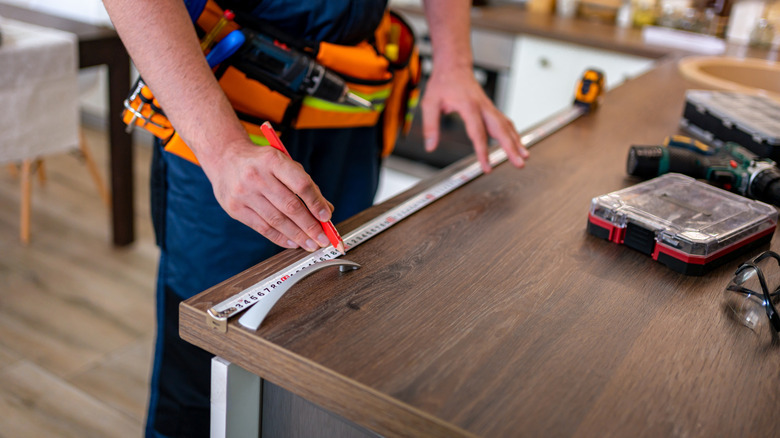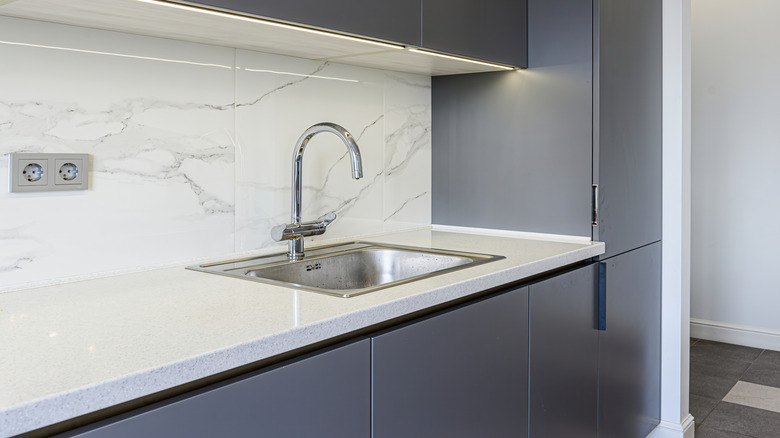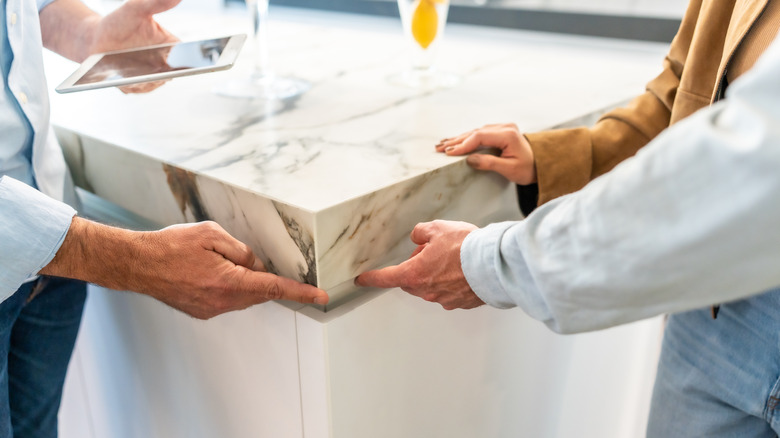Things To Consider Before Using A Pencil Edge (& How To Style It In Your Home)
Countertops are some of the most important surfaces in the entire home. Not only are they eye-catching fixtures that establish the tone of a space, they act as the cornerstone of a kitchen. Families will gather around the countertop to eat, bake, converse, and create lasting memories. So, it's important to make sure every aspect of the countertop is useful and visually pleasing. Once you've chosen the material, you'll also want to consider another feature of its appearance: the countertop edge. Modern day countertop options include an array of common countertop edge styles including straight edges and bullnose edges, but the pencil edge combines the best of both worlds by looking sleek and crisp with a subtle, slightly rounded edge.
A pencil edge is straight along the sides of the edge profile itself, but the corners of the profile thinly curve on the top and bottom. The thin edge is meant to resemble that of a pencil tip. It is very similar to an eased edge on a countertop, only the curve is more pronounced. The slim, rounded edges are comforting and feel kinder on the senses because they're not so sharp. This makes them especially suitable for households with small children who would be at eye level with the countertop. A pencil edge poses less of a safety risk since it dulls the corners that protrude outward, making them less pointing to avoid injury.
Pencil edges can be customized to fit your design preferences
Pencil edge countertops are practical and beautiful, softening the harshness that can come with more robust countertop edges while creating a more approachable and family friendly surface. Much like a quaint wooden pencil, the slight edge feels refined as it does not overwhelm the space. Instead, it offers an extra touch of elegance to complete the look. The pencil edge also spotlights the natural element of a stone countertop by highlighting its organic, grounding texture.
The countertop thickness will impact how much attention will be brought to the pencil edge. For example, the edge is more likely to stand out on a thicker panel. Meanwhile, the rounded pencil edge will probably not be available on especially thin panels because of the lack of height. If you're looking for a rounder edge, pencil edges can also be customized to have a rounder base along its side — that style is appropriately called a "pencil round" edge. For those that are looking for a more noticeable pencil edge, fabricators have experimented with double and even triple pencil edges. Triple pencil edges, similar to waterfall edges, consist of three descending tiers. Each one protrudes out further than the one above it, mimicking the look of a staircase. In custom creations, pencil edges can also be combined with a more noticeable bevel edge to create more of a prevalent curve on the top of the surface.
How to style a pencil edge countertop in your home
The best thing about a pencil edge countertop is that it will blend in well with a myriad of design atmospheres. It feels timeless in a way that makes it perfect for traditional kitchens but also chic among modern designs. Pencil edges are adaptable enough to fit with different countertop colors and materials, whether it's a white stone with vivid veining or grey granite. They are ideal for minimalist kitchens because the rounded feature is more slight than other options, while the sleek, linear edges fit particularly well with more industrial and contemporary aesthetics. What's more, the pencil edge will grab the attention of those in the know who might be impressed by small details. As an added bonus, it's great for households that want minimal maintenance as the compact edge does not create extra crevices that can capture and hold on to debris.
Pencil edges will last longer stylistically as more decorative edges are a once-popular countertop trend that will instantly date your kitchen. If you're deciding between a bold edge or a more reserved one, subtle edge features probably won't need to be updated as often. The understated pencil edge can also be less expensive than decorative edges as the cut required to create a simple pencil edge is not as intricate and probably won't require specialty laborers.


